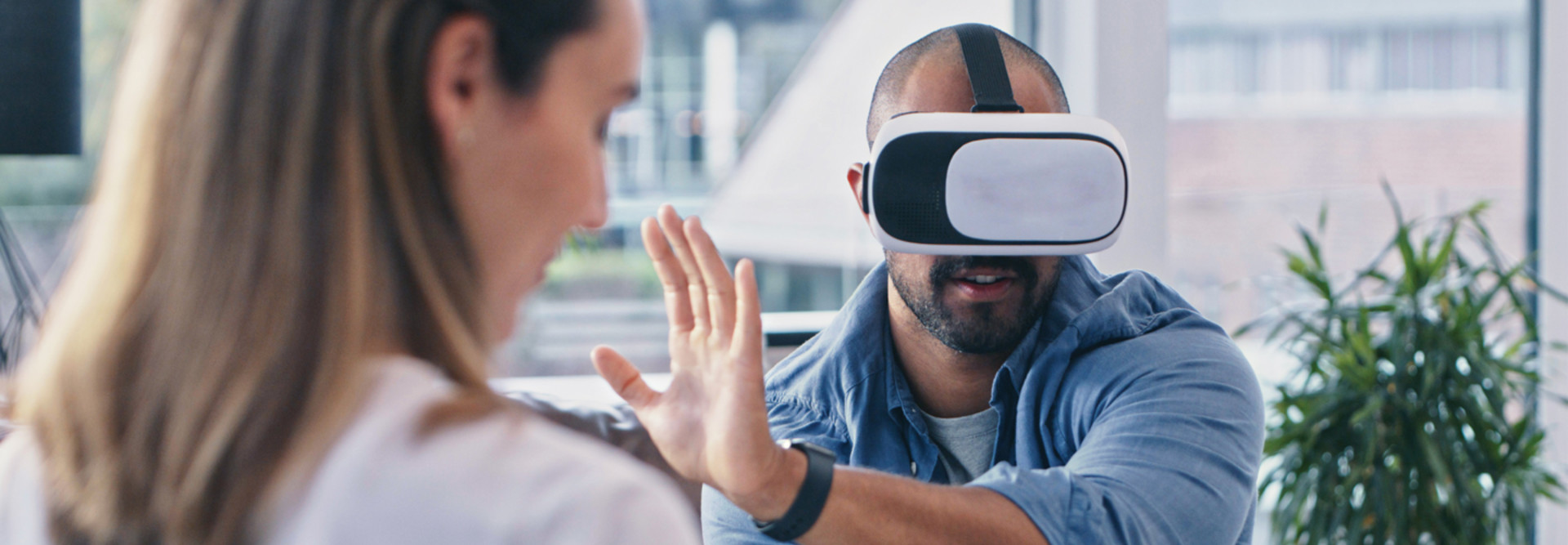How Does VR for Therapy Work?
Virtual reality immerses the user in a three-dimensional, interactive environment that’s traditionally found in video gaming but increasingly has applications in healthcare, particularly in mental health treatment. Across the VA, VR is aiding treatment of veterans struggling with depression, anxiety and isolation, as well as PTSD. These immersive tools also are enhancing physical, occupational and recreational therapies.
“We’re learning a lot in this space,” Bailey says. “The thing that we have been really excited to find is that veterans of all ages, all races, all ethnicities, all categories seem to really appreciate the experience of virtual reality.”
VA staff have embraced the technology too. In a pilot program at several medical centers, clinicians don headsets for “empathy training” to better understand the experiences of those in their care, specifically veterans with dementia and older LGBTQ veterans.
“Now what you hear and what you see in front of your eyes is the same thing as a patient who’s experiencing dementia or an LGBTQ veteran who’s aging,” Bailey said.
“All of a sudden, people start talking to you and what you hear is muddled, or your vision doesn’t see what you should be seeing. It looks distorted, or I can’t hear things because they’re not clear, even though I can tell that people are talking to me. Or, I get disoriented: I try to turn to the right, and things are shifty or crooked.”
RELATED: How is the Department of Veterans Affairs using extended reality for care?
How Can VR Therapy Treat PTSD and Mental Health Issues?
The immersive aspect of VR has led to improved care for veterans. For some struggling with PTSD, no other methods of treatment may have worked, Bailey says. “It helps to rewire that memory,” she says.
Currently, 15 VA medical centers have put the VR headsets to work for prolonged exposure therapy, incorporating software called Bravemind, created at the University of Southern California Institute for Creative Technologies. With support from the SoldierStrong Foundation, the VA can expand the technology to any sites that have interest in it, Bailey says.













